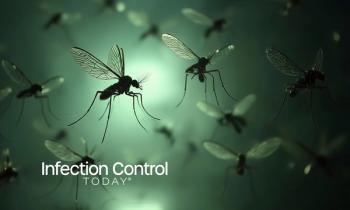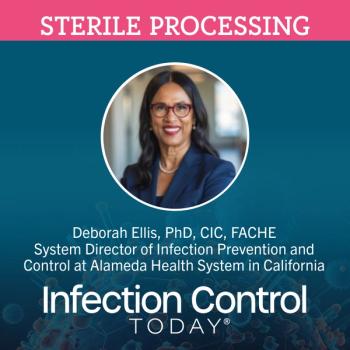
Researchers Say Being Too Clean Could Be Hazardous to Your Health and the Environment
Researchers at Virginia Tech have discovered that the use of antimicrobial soaps and other products may unnecessarily be directly exposing consumers to significant quantities of chloroform. Peter Vikesland, assistant professor in civil and environmental engineering, has shown in his research that when the chemical triclosan, present in many antimicrobial soaps, reacts with chlorine in tap water, chloroform is produced. Chloroform is classified by the Environmental Protection Agency (EPA) as a probable human carcinogen.
Vikeslands work was reported in last weeks online edition of Environmental Science & Technologys science news section (http://pubs.acs.org/subscribe/journals/esthag-w/2005/apr/science/kb_chlorine.html).
Triclosan is a synthetic antimicrobial agent, which is classified as a Class III drug by the Food and Drug Administration (FDA). As the result of its broad-spectrum bacteria-fighting ability, it has found increasingly popular use in personal care products, cosmetics, antimicrobial creams, acne treatments, lotions, hand soaps, and dish soaps. It is also used as an additive to plastics, polymers, textile, and implantable medical devices. Triclosan is most often used to kill bacteria on the skin and other surfaces and is sometimes used to preserve a product, including food.
The American Medical Association (AMA) has been urging the FDA to closely monitor and possibly regulate the home use of antimicrobials such as triclosan. The increasing popularity of antimicrobial products has preceded the study of the possible harmful affects of the use of such products.
Past research has shown that chloroform is produced when free chlorine reacts with organic material. This is the first work that we know of that suggests that consumer products, such as antimicrobial soap, can produce significant quantities of chloroform, said Vikesland. The implications of these reactions to consumers are not known. There are numerous potential exposure pathways that can be envisioned, such as inhalation and skin exposure, when using antimicrobial soaps to wash dishes or when taking a shower. There is also risk of exposure when using triclosan laden moisturizers as they may also react with chlorine in the water, said Vikesland.
Vikesland and his associates have conducted research closely mimicking conditions found when washing dishes in the home. The results show that it is possible that the chloroform produced when the antimicrobial soap containing triclosan mixes with chlorinated water could be absorbed through your skin or inhaled. Vikeslands research is funded by the American Water Works Association Research Foundation (AWWARF) and by a National Science Foundation (NSF) graduate research fellowship to Krista Rule, the lead student on the project.
Most of the consumer products that contain triclosan eventually end up being discharged down residential drains. It has previously been shown by researchers from the University of Minnesota that the photochemical reactions of triclosan could be producing dioxins in the presence of sunlight. Dioxins do not degrade over time and they can accumulate in body tissues to cause a greater effect. Even low levels of dioxin are a problem because of their tendency to accumulate along the food chain.
Vikesland is an NSF CAREER Awardee for 2004-2009. He was an invited participant at the National Academy of Engineering Frontiers of Engineering Symposium in 2003. Vikesland was also named an American Society of Civil Engineering Excellence in Civil Engineering Education (ExCEEd) Fellow in 2002. He received his bachelors degree in chemistry from Grinnell College in 1993. He received his masters and PhD from the University of Iowa in civil and environmental engineering in 1995 and 1998, respectively. His research areas of interest include environmental nanotechnology, subsurface contaminant remediation, and drinking water treatment.
Source: Virginia Tech (Virginia Polytechnic Institute and State University)
Newsletter
Stay prepared and protected with Infection Control Today's newsletter, delivering essential updates, best practices, and expert insights for infection preventionists.





